We promised the sequel of the 10 Revolutionary Cars That Changed the Automotive Industry, and it is finally here. We wanted to make the second part of the series even more detailed and exciting for you, and we also bumped the number from ten to fifteen. I hope it is worth the wait. Enjoy these 15 revolutionary cars that changed the automotive industry forever.
1. Mercedes-Benz G-Class
The Mercedes-Benz G-Class or sometimes G-Wagon (short for Geländewagen, “terrain vehicle”), is a four-wheel-drive automobile manufactured by Magna Steyr (formerly Steyr-Daimler-Puch) in Austria and sold by Mercedes-Benz.
Originally developed as a military off-roader, the G-Class has become so popular with athletes and musicians that luxury and elegance have completely reshaped the car.

In certain markets, it has been sold under the Puch name as Puch G. The G-Wagon is characterized by its boxy styling and body-on-frame construction. It uses three fully locking differentials, one of the few vehicles to have such a feature. Which still enables the G-Class to be a perfect off-roader. However, for most G-Class owners, the biggest off-road is probably the grass next to their kids’ school.
Despite the introduction of an intended replacement, the unibody SUV Mercedes-Benz GL-Class in 2006, the G-Class is still in production and is one of the longest-produced vehicles in Daimler’s history, with a span of 42 years. Only the Unimog surpasses it. The model is so successful that on December 4, 2020, the 400,000th unit was built.
2. Tesla Model S
Although the Model S and Tesla, in general, are relatively new, the technology and charger network they provide are beyond exceptional. Nor can we deny the fact that the era of internal combustion engines is coming to an end.
Manufacturers are constantly announcing that they will stop developing internal combustion engines as they are constrained by European and global regulations. So, it is obvious that we are mentioning one of the best-known electric vehicles with one of the best battery technology and highest range.
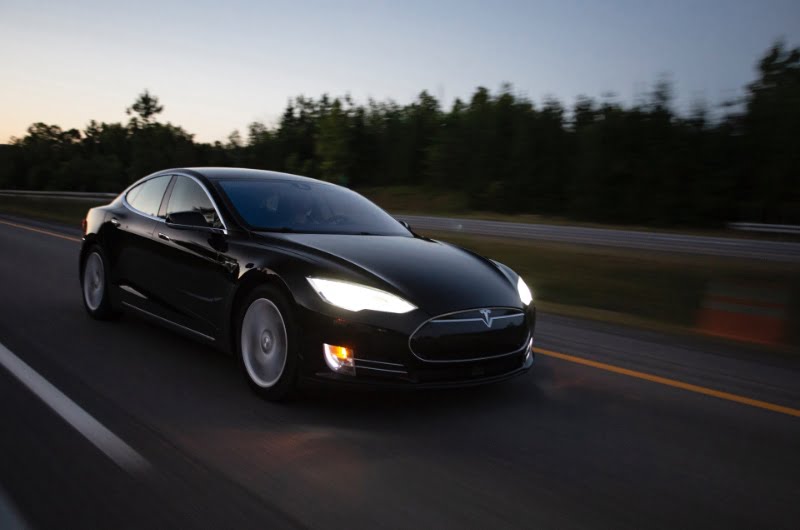
3. Austin MINI
The Mini is a two-door compact city car produced by the British Motor Corporation (BMC) and its successors between 1959 and 2000. The original Mini is considered an icon of 1960s British pop culture. Its space-saving transverse engine and front-wheel drive influenced a generation of car manufacturers.
The design allowed 80% of the car floor to accommodate passengers and luggage. In 1999, the Mini was voted the second most influential car of the 20th century, behind the Ford Model T and ahead of the Citroën DS and the Volkswagen Beetle.
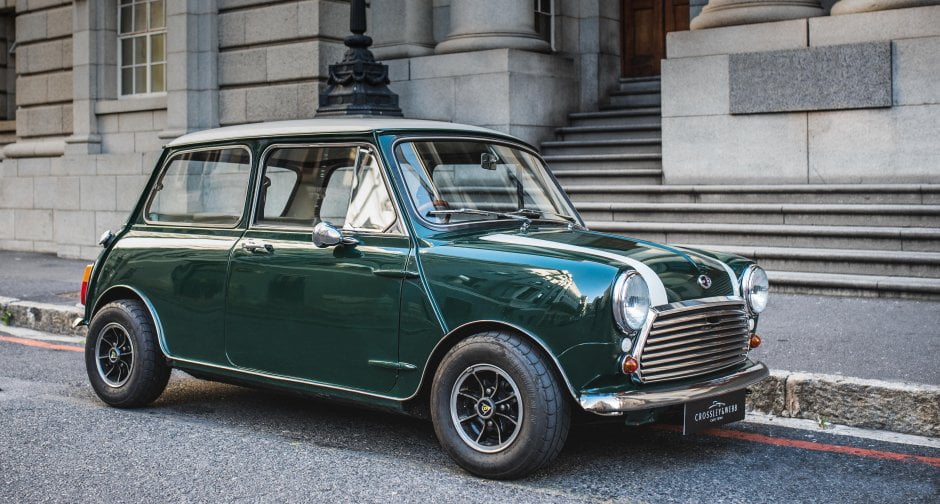
The Mini’s front-wheel drive, transverse engine layout was copied for other “supermini” designs. Among them are the Honda N360 (1967), the Nissan Cherry (1970), and the Fiat 127 (1971). The layout was also used in larger subcompact designs.
4. Ferrari 250 GTO
If you read the previous article, you can see that we also mentioned a Ferrari in it. The truth is that the cars of the Maranello-based manufacturer are all aged extremely well. The 250 GTO is not just a timeless icon but the most expensive car ever sold at an auction.
The Ferrari 250 GTO is a GT car produced by Ferrari from 1962 to 1964 for homologation into the FIA’s Group 3 Grand Touring Car category. It was powered by Ferrari’s Tipo 168/62 Colombo V12 engine.
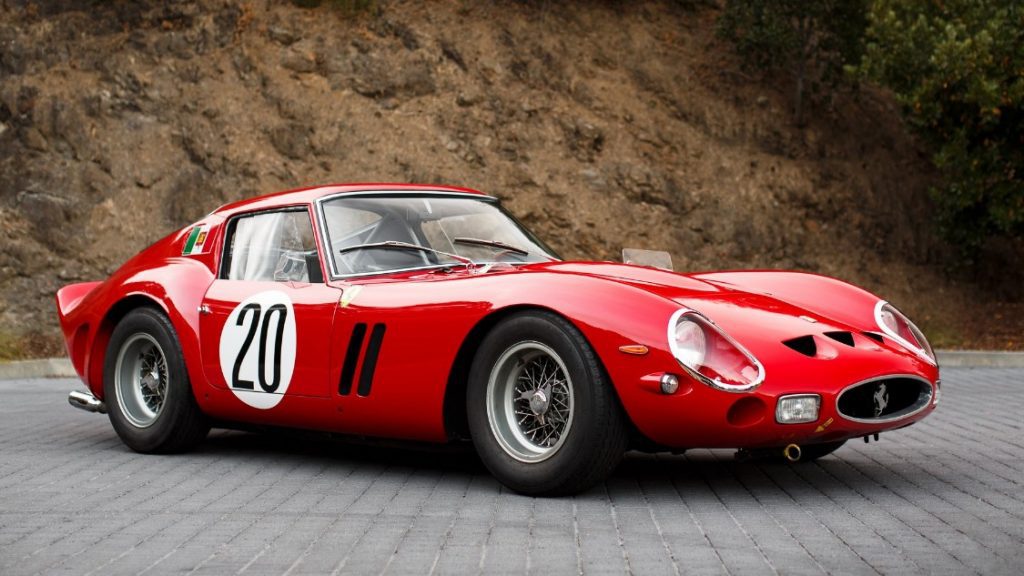
The “250” in its name represents the displacement in cubic centimeters of each of its cylinders. “GTO” stands for Gran Turismo Omologato, Italian for “Grand Touring Homologated.” Just 36 of the 250 GTOs were manufactured between 1962 and 1964. This includes 33 cars with 1962-63 bodywork (Series I) and three with 1964 (Series II) bodywork similar to the Ferrari 250 LM. Four of the older 1962-1963 (Series I) cars were updated in 1964 with Series II bodies.
When it was launched, the 250 GTO cost $18,000 in the United States. The buyers were personally approved by Enzo Ferrari and his dealer for North America, Luigi Chinetti. This model has since become highly desired by automobile collectors, and sales have repeatedly set price records. The current record for the world’s most expensive car was set in June 2018 when a 1963 250 GTO (chassis 4153GT) was sold in a private auction for $70 million.
5. Ford Mustang
The granddad of American muscle cars. The Ford Mustang is a series of American automobiles manufactured by Ford. In continuous production since 1964, the Mustang is currently the longest-produced Ford car nameplate. The model is currently in its sixth generation, and it is the fifth-best-selling Ford car.
The namesake of the “pony car” automobile segment, the Mustang was developed as a highly-styled line of sporty coupes and convertibles derived from existing model lines, initially distinguished by “long hood, short deck” proportions.

With its sixth iteration – the Mustang Mach-E – the once petrol-powered machine has become an environmentally friendly electric vehicle. Although the future is electric, the legacy of the V8-powered Mustang will not be forgotten.
6. Bugatti Veyron
Bugatti was and still is the revolutioner of production car top speeds. The Bugatti Veyron EB 16.4 is a mid-engine sports car, designed and developed in France by the Volkswagen Group and Bugatti and manufactured in Molsheim, France, by the French automobile manufacturer Bugatti. It was named after the racing driver Pierre Veyron.

The original version has a top speed of 407 km/h (253 mph). It was named Car of the Decade and the best car award (2000–2009) by the BBC television program Top Gear. The standard Bugatti Veyron also won Top Gear‘s Best Car Driven All Year award in 2005. Veyron has a timeless appearance that has defined the design language of future Bugatti models.
7. McLaren F1
The McLaren F1 is a sports car designed and manufactured by British automobile manufacturer McLaren Cars and powered by the BMW S70/2 V12 engine.
The original concept was conceived by Gordon Murray, a South African-born British designer of Formula 1 racing cars. Murray was able to convince Ron Dennis to back the project. He engaged Peter Stevens to design the exterior and interior of the F1.

On 31 March 1998, the XP5 prototype with a modified rev limiter set the Guinness World Record for the world’s fastest production car, reaching 240.1 mph (386.4 km/h), surpassing the modified Jaguar XJ220’s 217.1 mph (349 km/h) record from 1993.
The top speed was famously set by racing driver Andy Wallace at Volkswagen’s Ehra-Lessien test track. The monumental British hypercar carried the title of the World’s fastest production car for the best part of 15 years.
8. Volkswagen Beetle
The VW Beetle is a two-door, rear-engine economy car intended for five passengers (later Beetles were limited to four in some countries) manufactured and marketed by Volkswagen (VW) of Germany between 1938 and 2003.

The necessity, concept, and functional objectives of the people’s car (Volkswagen in German) were formulated by the leader of Nazi Germany, Adolf Hitler, who wanted a cheap, simple mass-produced car for his country’s new road network.
Lead engineer Ferdinand Porsche and his team took until 1938 to finalize the design. The finished design of the Beetle was so influential that even later when Porsche founded its own company, it formed the basis of many of its cars.
9. Acura NSX
The NSX is probably one of the best-known Japanese supercars, combining Japanese reliability and raw power. The Honda NSX, marketed in North America as the Acura NSX, is a two-seat, mid-engine coupe sports car manufactured by Honda.

The origins of the NSX trace back to 1984, with the HP-X (Honda Pininfarina eXperimental) concept, which was a mid-engine 3.0 L V6 engine rear-wheel-drive sports car. Honda committed to the project to meet or even exceed the performance of the then V8-engined Ferrari range while offering reliability and a lower price point. The concept thus evolved and had its name changed to NS-X, which stood for “New”, “Sportscar” and “eXperimental”, although the production model was launched as the NSX.
The NSX was so special that Gordon Murray, the designer of the McLaren F1, stated that he used the NSX as the inspiration for the F1. After test-driving many high-performance cars, he found the NSX chassis performed the best. Murray noted that the design was “monumental” to sportscar design. He also noted that the NSX could easily have handled more power and attempted to convince Honda to develop a more powerful engine, but they declined. This resulted in Murray developing the F1 with a BMW engine, and the rest is history. However, he was so fond of the NSX that he bought one for personal use and drove it for 75,000 km.
10. BMW M3 E30
The first steps on a beautiful journey toward motorsports and sporty sedans. If you’re wondering what the M in BMW M stands for, it’s Motorsport. The first M3 built by the BMW M division was the E30 M3.

The first BMW M3 was based on the E30 3 Series and was intended to be a homologation special to satisfy the DTM (Deutsche Tourenwagen Meisterschaft) and Group A Touring rules, which required a total of 5,000 cars to be built. It was presented to the public at the 1985 Frankfurt Motor Show and began production from March 1986 to June 1991.
11. Land Rover Defender
Durability and combined with a timeless look. The Land Rover Defender is possibly the most stylish off-roader on the market. The Defender (initially introduced as the Land Rover 110 / One Ten, and in 1984 joined by the Land Rover 90/ Ninety, plus the new, extra-length Land Rover 127 in 1985) is a series of British off-road cars and pick-up trucks.
They consistently have four-wheel drive and were developed in the 1980s from the original Land Rover Series, which was first presented at the Amsterdam Motor Show in April 1948.

Following the 1989 introduction of the Land Rover Discovery, the term ‘Land Rover’ became the name of a broader brand and thus no longer worked as the name of a specific model. Therefore, in 1990 Land Rover renamed the 90 and 110 Defender 90 and Defender 110, respectively. The 127 became the Defender 130. Nowadays, the Defender is more than a nifty off-roader. It is a popular choice for families – and even contractors, everywhere around the globe. At the time of writing, you can see the latest Defender (L316) model in the latest James Bond film, No Time to Die!
12. Fiat 500
I don’t think there’s another car as well known as the Fiat 500. The small four-seater auto is an authentic Italian idol that is immediately recognizable to everyone.

The Fiat 500 is a rear-engined, four-seat, small-city car manufactured and marketed by Fiat Automobiles. It was in production from 1957 to 1975 over a single generation in two-door saloon and two-door station wagon body styles. Launched as the Nuova (new) 500 in July 1957, as a successor to the 500 “Topolino”, it was an inexpensive and practical small car.
Measuring 2.97 meters long and originally powered by a 479 cc two-cylinder, air-cooled engine, the 500 was 24.5 centimeters shorter than Fiat’s 600 – launched two years earlier, and is considered one of the first purpose-designed city cars.
13. AC Shelby Cobra
The AC Cobra, sold in the United States as the Shelby Cobra and AC Shelby Cobra, is a sports car manufactured by British company AC Cars, with a Ford V8 engine. It was produced intermittently in both the United Kingdom and later the United States in 1962.
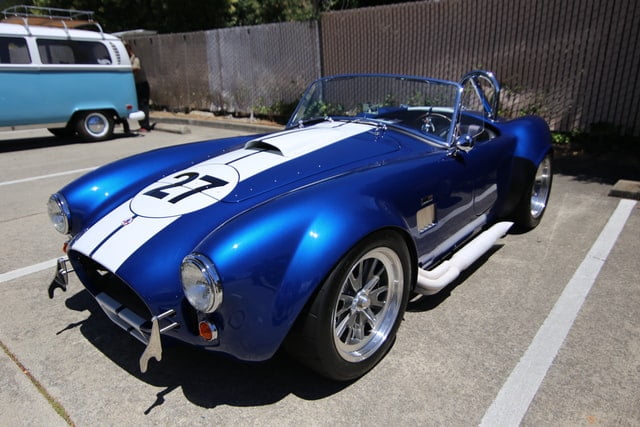
In September 1961, American retired race car driver and automotive designer Carroll Shelby wrote to AC asking if they would build him a car modified to accept a V8 engine. Shelby went to Chevrolet to see if they would provide him with a powertrain.
They didn’t want to add competition to the Corvette, so they said no. However, Ford wanted a car that could compete with the Corvette, and they happened to have a brand new engine that could be used in this endeavor. The Windsor 3.6-litre engine – a new lightweight, thin-wall cast small-block V8. Ford provided Shelby with two engines. You can see the car featured in the 2019 movie – Ford v Ferrari.
14. Datsun 240Z
A small Japanese coupe that stood the test of time. The Nissan S30 (sold in Japan as the Nissan Fairlady Z and in other markets as the Datsun 240Z, then later as the 260Z and 280Z) is the first generation of Z GT 3-door two-seat coupés, produced by Nissan from 1969 until 1978.
It is considered one of the most successful sports car lines ever manufactured. The trend-setting S30 was conceived by Yutaka Katayama, the President of Nissan Motor Corporation U.S.A., and designed by a team led by Yoshihiko Matsuo, the head of Nissan’s Sports Car Styling Studio.

15. Rimac Nevera
The second and last electric vehicle on the list is the Rimac Nevera. Although electric vehicles are relatively new to the market – at least in their current form, it’s safe to say that the Nevera will be a car that we think of as a timeless masterpiece that revolutionized the automotive industry.

The Rimac Nevera is an all-electric sports car designed and manufactured by the Croatian automotive manufacturer Rimac Automobili. The first production prototype car was released in August 2021. Rimac will produce 150 vehicles and is currently in the process of homologation for the global market. Nevera is manufactured in the same factory and at the same rate (roughly 1 per week) as the Pininfarina Battista, which is based on the same platform.
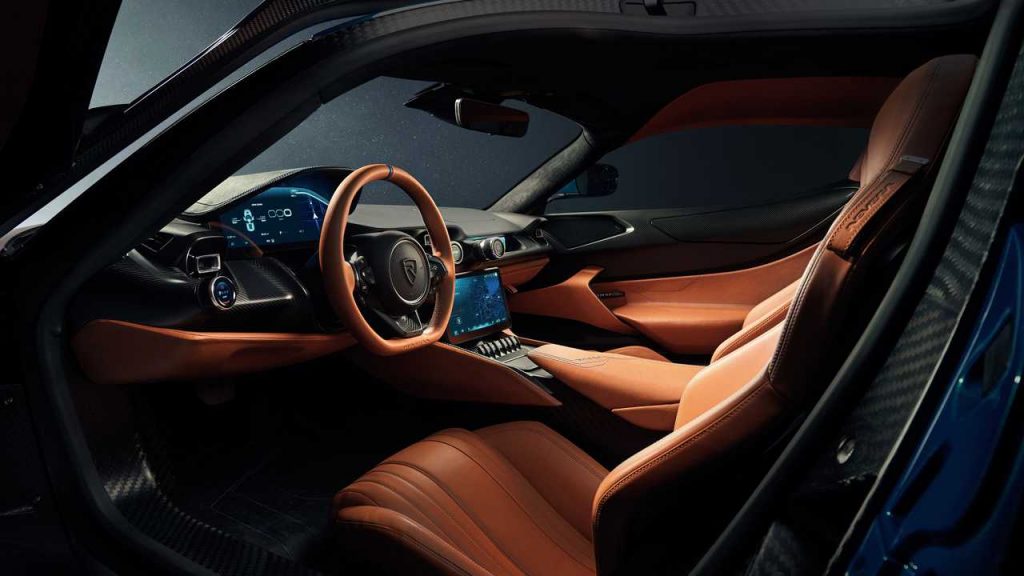
Each of the Nevera’s four wheels is individually driven by surface-mounted magnet motors. Combined, they produce a total of 1,427 kW (1,914 hp) and 2,360 Nm of torque. A single-stage gearbox links the front and rear wheels.
The Nevera allegedly can accelerate from 0–97 km/h (0–60 mph) in 1.85 seconds, making it potentially the fastest-accelerating production car in the world. According to Rimac Automobili, it will accelerate from 0–161 km/h (0–100 mph)0 in 4.3 seconds, 0–299 km/h (0–186 mph) in 9.3 seconds, and has a top speed of 412 km/h (256 mph).
Final Thoughts
To summarize this article. There are still dozens of cars that are exceptional in their respective segments, but we don’t want to make this article any longer. We’ll continue the list of timeless vehicles that have revolutionized the automotive industry. If you know of a car that you think could be on the list, please let us know via direct message or email. We hope you enjoyed the list.
Keep on reading: Ferrari 308 GTB/GTS – A Piece of the Italian History




